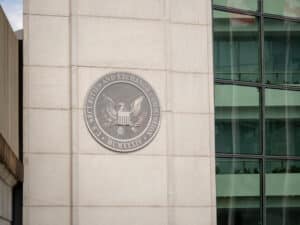Longer-term U.S. Treasurys are currently enduring a bear market period that exceeds the duration of both the 2000-2002 dotcom crash and the 2007-2008 financial crisis, according to DataTrek Research.
Record Decline for Treasury Bonds
On August 4, 2020, the iShares 20+ Year Treasury Bond ETF TLT, which focuses on long-term Treasurys, reached its all-time high. However, since then, the fund has experienced a significant decline of 50%, marking a three-year and two-month long bear market period. This information was provided by Jessica Rabe, co-founder at DataTrek.
Comparing To Stock Market Declines
A bear market is typically characterized by an index falling at least 20% from its recent peak. In comparison, the S&P 500 SPX fell by 49% over 637 trading days from its cycle high on March 23, 2000 to its lowest point on October 9, 2002 during the dotcom bubble burst. Similarly, during the aftermath of the global financial crisis, the large-cap U.S. equity gauge dropped by 57% over 355 trading days from its peak in 2007.
Recent Surge in Long-term Treasury Yields
Recently, long-term Treasury yields have experienced a surge, with the 30-year BX:TMUBMUSD30Y and 10-year Treasury rates reaching their highest levels since 2007. However, they have since pulled back. On Tuesday, the yield on the 10-year Treasury decreased by 15.6 basis points to 4.627%, while the 30-year Treasury fell by 11.5 basis points to 4.826%.
Read: Treasury-market selloff has become the worst bond bear market of all time, according to BofA
Looking Ahead: Federal Reserve’s Role
According to Rabe, long-term Treasurys are likely to continue struggling until the Federal Reserve shifts its monetary tightening policy. In a Tuesday note, she explained that significant lows in capital markets tend to occur when there is a change in policy that addresses uncertainty about a particular issue.
Historical Examples
Rabe pointed out that U.S. stocks reached their bottom in October 2002 when Congress approved military action in Iraq, providing investors with some clarity amid geopolitical uncertainty. Similarly, stocks hit their cycle low in March 2009, one month after the enactment of the post-Financial Crisis American Recovery and Reinvestment Act of 2009 by the Federal government.
Current Stock Market Performance
On Tuesday, stocks saw an increase, as the Dow Jones Industrial Average DJIA rose by 0.6% and the S&P 500 went up by 0.8%. The Nasdaq Composite COMP also gained 0.8%, according to FactSet data.


